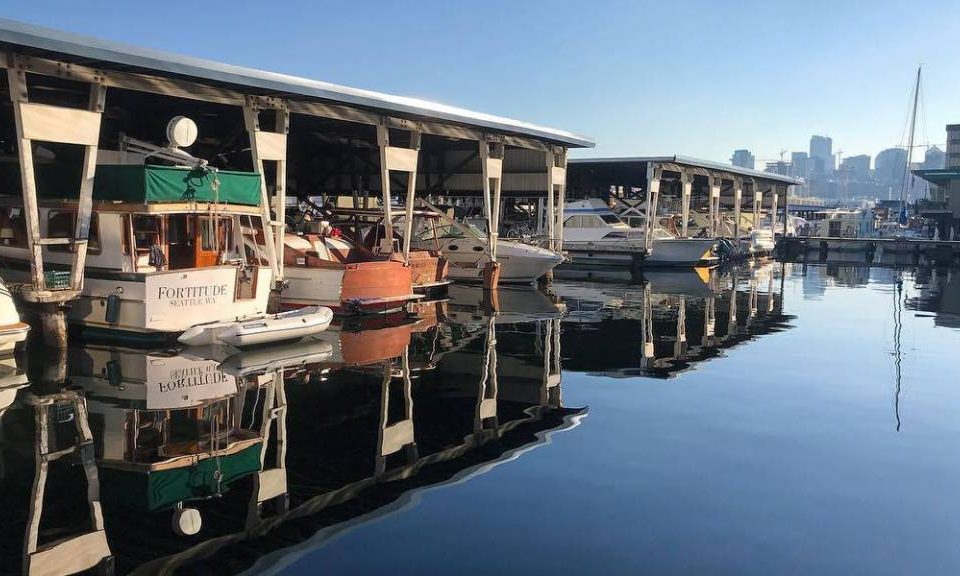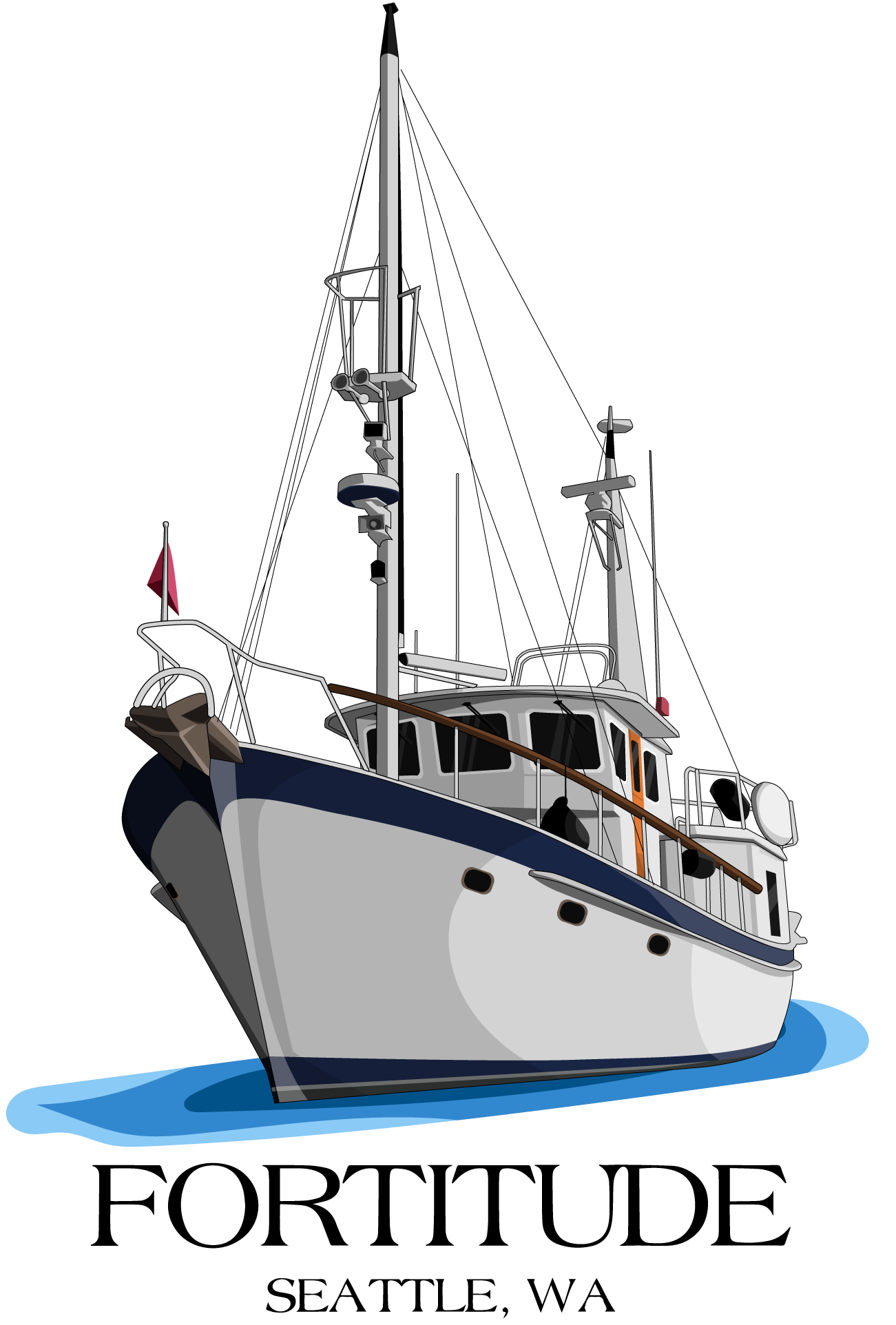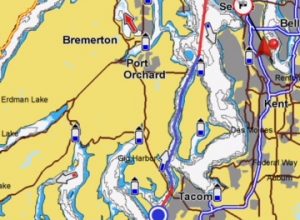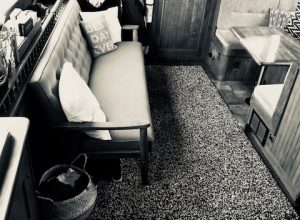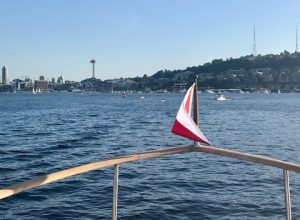planning arrivals is key to safety and a healthy marriage
We’re both newbies to trawlers, twins and slips. When we had our sailboat in Maine we were used to motoring up to and picking up our mooring buoy. No muss, no fuss. The only boat we ever needed to dock was the peapod at the dingy dock.
Here in Seattle we are incredibly fortunate to have a covered slip on South Lake Union but it’s in the very back of an older marina with an “A frame” construction meaning the top of the vertical roof support beams are about 2′ narrower at the level of the boat deck railing than the width of the slip. This presents some challenges once the bow is in as our most likely issue is catching the boat deck railings on either side – which I’ve done.
Yelling “STOP!” after you have a fender between us and a post isn’t helpful…yelling “You have ten feet off the port stern and closing” is very helpful.
Steven Webster, after a particularly difficult docking and a cold beer
This precision is required after entering from the lake through a narrow channel, making a 90 degree turn to starboard in a fairway that is only about 10′ wide than our boat and finally one more turn into the slip while making sure not to get pushed up against the marina or boats to port due to wind or wake.
Needless to say it takes a lot of focus, a good plan and communication. This entire process is something we’re not great at yet but we learn each time and each docking seems to get better (with the occasional blunder in-between). Fortunately, we grade our success on the trend-line not the last ![]()
our “rules for docking”
So far we haven’t broken anything yet, not even our pride, but we have come up with a few “rules for docking” that we continuously add to:
1. Prep. All lines and fenders out and at the ready long before entering the marina. Boat hooks extended; one on the bow and one on the stern.
2. Plan. We have to work on this one but knowing what the typical approach looks like and what to do if wind, waves and experience don’t cooperate. What is the “go around” plan (in our case it’s back up in the fairway and re-approach).
3. Communicate. This is something we work on constantly. Yelling “STOP!” after you have a fender between us and a post isn’t helpful…yelling “You have ten feet off the port stern and closing” is very helpful. (We’re planning to purchase headsets for this when we’re just going out as a couple and to make it easier to communicate earlier so corrections can reduce those “STOP!” moments.
4. People. Sometimes helpers are not always helpful. It’s natural for our friends onboard to want to help and coming into the dock is pretty cool to see up close. Often however they end up not knowing where to be or what to do or over communicate or don’t communicate at all. This has lead to a new boat rule: if you’re not part of the “crew”, know the plan and/or know how to help while staying clear of danger you need to stay inside.
This upside to the finesse required to dock in our own slip is that coming up to a finger in a marina or getting between two tour boats at the fuel dock isn’t nearly has intimidating.
Finally, there is nothing like pulling off a “squeaker” A few weekends ago we headed over to Bainbridge Island. As I backed into the Pub House dock in front of a 60′ sailboat I used the gears to just nudge the bow toward to the dock, put her in forward and goose the throttles just enough to stop our backward motion and literally just “kiss” the dock. I then stepped off the swim platform and tied up the stern, bow and spring. The previously nervous captain of the sailboat just said” nice job”. In truth it was more than a bit of luck for me to pull that off but I’ll take the compliment! ![]()
